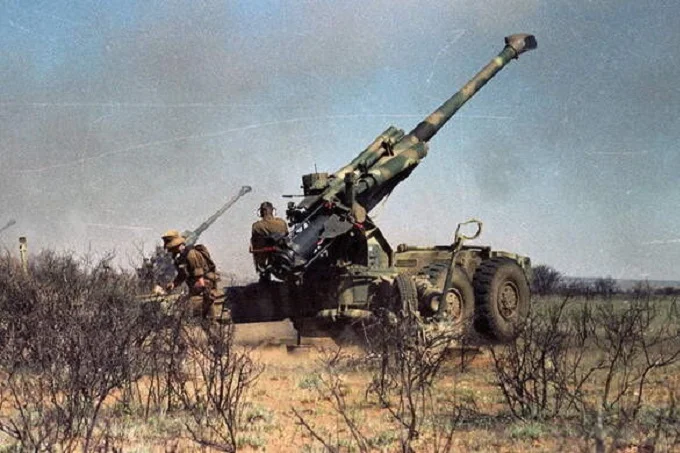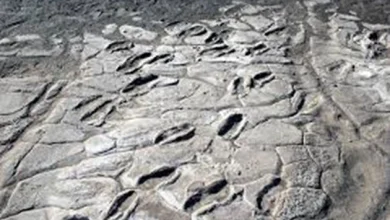Namibian War of Independence from South Africa: former colony against former colony

The colonial redistribution of the world after the First World War and decolonization after the Second World War created many problems. The military-political actors were not only European powers but also the states created during the colonial conquests. Thus, Australia and New Zealand in the Pacific Ocean and the Union of South Africa in Africa received the former colonies of Germany at their disposal.
At the same time, South Africa (later South Africa) parted with the acquired territories more difficult than others. In the second half of the twentieth century, a guerrilla war broke out on the territory of Namibia, controlled by South Africa, in which neighboring Angola and Zambia were involved. For several decades, several parties and their armed formations with the support of South Africa, Cuba, the USSR, and China fought with each other and against external enemies.
The Europeans captured the territory of present-day Namibia in the 19th century when the German colony of South-West Africa was founded on this vast (four times the size of Great Britain and about 2/3 the area of South Africa). In 1915 it was completely occupied by the troops of the Union of South Africa, the dominion of the British Empire. By the decision of the Paris Conference of 1919, the mandate to govern South-West Africa went to the same dominion. Even after the dissolution of the League of Nations, South Africa refused to acknowledge the loss of its power over the territory. After the proclamation of South Africa in 1961, Namibia also remained under the control of the South African authorities, who supported the apartheid regime on its territory.
The impetus for creating their own political parties was the decolonization process that began in Africa in the 1950s. In 1959, the first political party in Namibia was formed – the South West Africa National Union (SWANU). In 1960, another appeared – the South-West Africa People’s Organization (SWAPO). The parties differed not even in their program settings but in their ethnic composition since one consisted mainly of representatives of the Herero people and the other – Ovambo.
That year generally turned out to be significant since it went down in history as the “Year of Africa”, and fifteen independent states appeared on the world map. It should be noted that the joy of liberation soon passed and was replaced by wars between neighbors and clashes between political parties within new countries. However, Namibia had yet to win its independence since South Africa did not intend to lose its power over this rich in mineral resources and, what is important, sparsely populated territory.
The South African authorities had enough problems with the liberation movement. The African National Congress (ANC) has waged a long and stubborn struggle, supporting the anti-colonial movement in neighboring Namibia. Immediately after the formation of SWAPO, its emissaries dispersed in search of help, finding it from the opponents of colonialism in Tropical (Ghana, Tanzania) and North Africa (Egypt, Algeria) and Eurasia (USSR, North Korea). SWAPO needed trained soldiers and weapons to conduct military operations against South African forces.
On the basis of SWAPO, the People’s Liberation Army of Namibia (PLAN) – or until 1969 South West Africa Liberation Army – was created. The emergence of such organizations naturally caused panic in Pretoria, since South African politicians feared a domino effect, not without reason – if apartheid falls in Namibia, then it will happen in South Africa. It should be noted that this consideration was, in general, correct.
Initially, SWAPO and PLAN suffered from a lack of weapons and ammunition and took refuge in Zambia and Tanzania, where they underwent combat training. SWAPO units in 1966 began to infiltrate Ovamboland in northern Namibia. Near the village of Ongulumbashe, the first major clash took place between the rebels and the South African police, supported by helicopters of the South African Air Force.
The purpose of SWAPO was to capture the so-called “Caprivi Bands”, a long and narrow stretch of Namibian territory between Angola, Zambia, and Botswana. The rebels needed the strip to equip permanent bases and facilitate the transfer of heavy weapons – mortars and cannons – to the central regions of the country. SWAPO detachments preferred to operate in the rainy season, providing them with drinking water and feeding the plants that hid the advance.
South African authorities initially underestimated the insurgency in Namibia. Based on the experience of the Portuguese in Angola and Mozambique, as well as on its own fight against the guerrillas in Zimbabwe (then Southern Rhodesia), South Africa tended to view the Namibians as something unimportant, which could be dealt with using only police forces.
Also, the South African authorities adopted a special law on terrorism, which established special rules of court proceedings, which made it possible to deal with captured rebels within the framework of closed courts and also pursued a policy of dividing African peoples, limiting their residence to the framework of the so-called “Homelands” (bantustans). However, by the early 1970s, it became clear that the police force was not enough, and military operations were to be extended to the territory of nearby African states, where the members of SWAPO found shelter.
There were also new problems associated with the propaganda of SWAPO. The first wave of popular discontent came on December 13, 1971, when Ovambo contract workers, who provided about 70% of the workforce used in the white areas, went on strike. This action escalated into a general strike, and although the latter was nevertheless settled through negotiations between the government and representatives of the Bantu peoples, riots continued, especially in Ovamboland. Border posts were demolished, properties were destroyed, elders and leaders were attacked. In addition, as a result of the boycott initiated by SWAPO, the first elections in Ovamboland’s Bantustan were disrupted, since, in August 1973, only 2.3% of the electorate came to them.
A new round of the anti-colonial movement in Africa, associated with the independence of Angola, the former Portuguese possession, has changed a lot in the balance of power in Namibia. The leadership and SWAPO fighters took the opportunity to move their bases directly to the border with Namibia, having moved there from Zambia and Tanzania. The South African Defense Force (SADF) responded by introducing their units into Angola.
SADF operations in Angola were complicated by the fact that in this former colony several military-political groups – UNITA, MPLA, and a number of others – had already fought against the metropolis and with each other, now supporting one side or the other in the Namibian conflict. UNITA took the side of South Africa and enjoyed the support of the United States, while the MPLA was on the side of SWAPO and was supplied with assistance from Cuba and the USSR. In Operation Savannah, carried out in 1975, the SADF succeeded in advancing deep into Angolan territory, taking control of the parts of Angola bordering the Caprivi Strip. In 1974-1976, South Africa tripled its military presence here, deploying 45,000 troops to the occupied lands.
It is clear that the further the forces of South Africa pushed the Namibian rebels deep into Angola, the more difficult it was for the latter to penetrate into Namibia. Between 1978 and 1985, the SADF conducted seven major incursions into Angola, involving air forces, artillery, and missile attacks. By this, South Africa achieved, in fact, the fact that in 1976 the UN declared the power of Pretoria over Namibia as an occupation, and SWAPO in the eyes of the world community gained a reputation as a fighter against the double evils of colonialism and apartheid.
In response to this and the continuing attempts of SWAPO to penetrate the territory of Namibia and gain a foothold there, the South African government decided to organize a local militia (South West African Territory Force) from various ethnic groups (90% of its soldiers were not white). Interestingly, Namibians of European descent actively protested against compulsory military service. By 1984, about 11,000 people had been trained to maintain order within the country and were used to fight SWAPO.
In the 1970s-1980s, attempts were also made to resolve the conflict not by the military but by political means. Back in 1975, several meetings were held between representatives of South Africa and the political parties of Namibia, at which several important decisions were made regarding the future of the country, but they were never implemented. The political games with the formation and dissolution of the Namibian government and parliament did not give a positive result.
In return, South Africa chose to build up its military contingent (some figures say about 100,000 soldiers of all types of troops), while simultaneously trying, as mentioned above, to “namibize” the armed forces. True, the paramilitary formations known as the “koevoet” (literally “Loma”) distinguished themselves with particular cruelty in their treatment of the civilian population, they were accused and, apparently, not without reason, of attacks and rape.
By the end of the 1980s, SWAPO had benefited from the significant growth in the internal political infrastructure of Namibia, which was accompanied by support from foreign allies of the rebels – primarily the countries of the Eastern Bloc and a number of African countries sympathetic to the rebel cause. In June 1985, moderate Namibian politicians formed an interim government known as the Transitional Government of National Unity. The next year, the first legal congress of SWAPO was held.
Despite the decreased intensity of armed clashes, the conflict continued until the end of the 1980s. Only with the mediation of the United States, a peace agreement was signed between South Africa, Cuba, and Angola, which set the timing for the withdrawal of troops from all occupied and contested territories. The USSR, which abruptly cut off aid to its allies around the world for internal reasons, could no longer do anything.
The most important achievement was the agreement on the withdrawal of South African troops from Namibia and the simultaneous evacuation of Cubans from Angola. After Namibia gained full independence, SWAPO came to power in 1989 after national elections, competing with SWANU and several other parties that formed in the short time after the withdrawal of South African forces.




